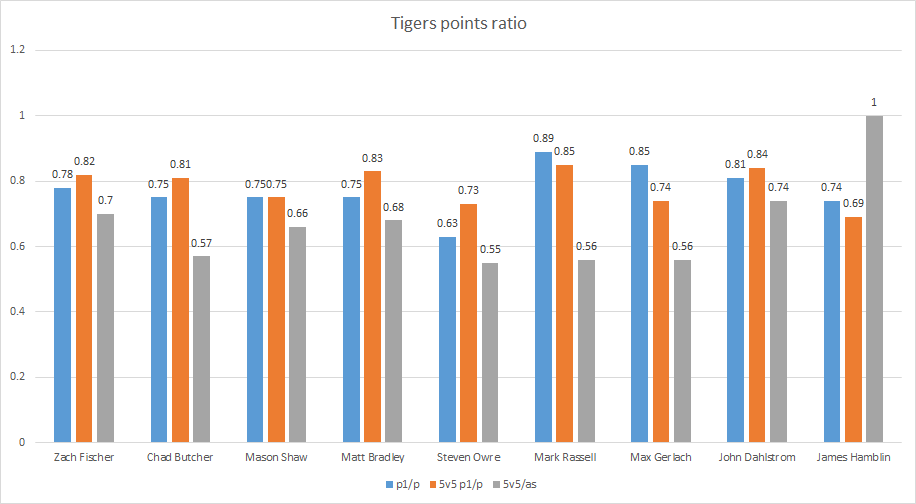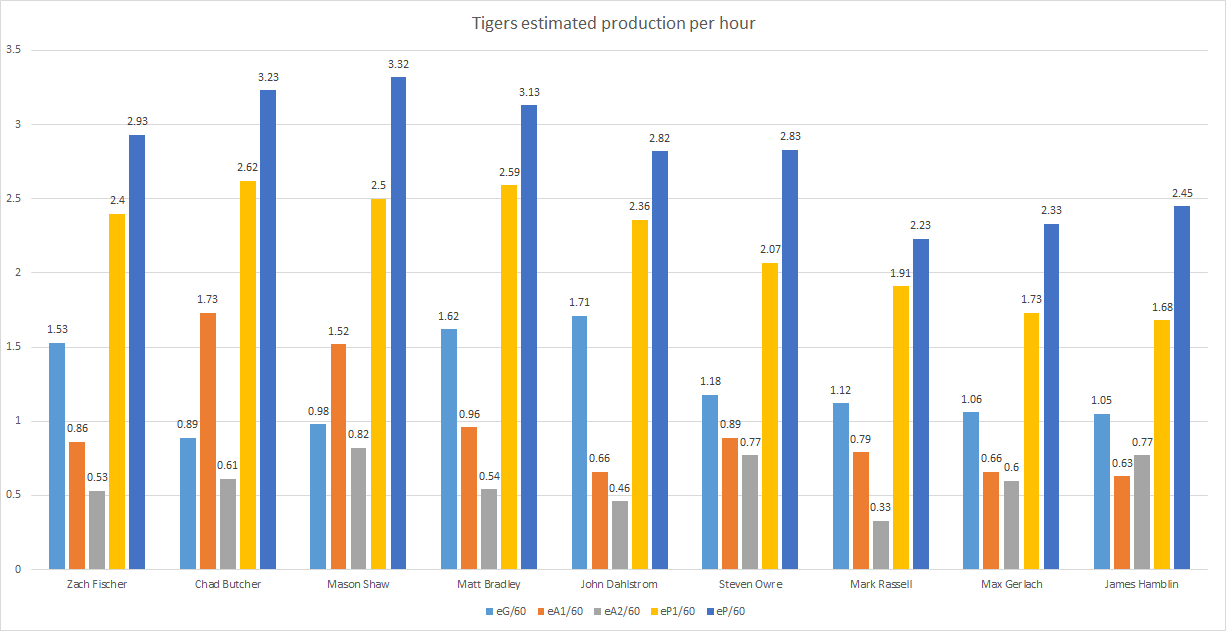A closer look at Zach Fischer

Not many expected Medicine Hat Tigers right winger Zach Fischer to be drafted this year. He was passed over in his first two drafts. Injuries played a part in that, but he also had some on-ice struggles that kept him off the radar. Headed into the 2017 draft, few had probably heard his name, and practically none thought he would be selected. Too old, not enough production, etc.
But talk to any WHL scout and they’ll rave about him. He’s been described as the most noticeable player on the ice for the Tigers and one of their more dominant players all around the ice. He’ll score, hit, fight, and do everything he possibly can to help his team win.
The Flames were obviously impressed enough to use a fifth round pick on the young sparkplug. What’s he made of?
Points and such
Fisher’s 63 points is not that astounding a figure in itself, especially given that some of his teammates scored well into the 90s and 100s, but that requires some contextualizing (as most things do):

In terms of p1/p ratio, both at all situations and 5v5, Fischer is mostly similar to his teammates. Doesn’t stand out one way or the other. The major difference is that Fischer was not nearly as reliant on powerplay and non 5v5 scoring to boost his totals. In all situations, he finished sixth in scoring, finishing 39 points out of the top spot. At 5v5, that difference is less pronounced. Fischer finished fifth in 5v5 scoring, 17 points out of first.
And of course, ice time plays into that:

On a per hour basis, Fischer stacks up quite nicely to his teammates. He’s only 0.39 eP/60 out of first place, and 0.22 eP1/60 out of first. Those are some razor thin margins, which likely indicates that Fischer was just as good as his teammates given the fact that he had less ice time. Combined with the data above about point ratios, I feel that it would be fair to conclude that Fischer was a first liner buried beneath older players.
The only issue I can see with Fischer is that he has an extremely high eG/60 (third) versus a wildly low eA/60 (1.39, sixth). That could indicate that he is a power forward (true), or that he had an higher than usual shooting percentage, which is unverifiable due to the WHL not keeping shot data. We’ll sit on this criticism for the time being.
Comparables
Fischer isn’t unique in the grand scheme of things: 149 players since 1996-97 have had similar seasons to his 2016-17 season. Here’s the list.
The results are not pretty. Of the 149, only 16 have gone on to have NHL careers. Although not indicated on the list, a lot of these guys went to the CIS after finishing their junior careers. That’s never a great sign.
And if we really nitpick, some of those 16 are suspect. Four (Jannik Hansen, Mikael Backlund, Michael Grabner, Victor Rask) are Europeans who took different routes to the WHL, going through pro leagues beforehand. Others established names (Ryan Getzlaf, Tyler Johnson) never had similar career trajectories, and their similar seasons seem to be the result of factors out of their hands (Getzlaf faced a coaching change, Johnson was considered too small).
This is not to say that all hope is gone. Zack Smith and Paul Gaustad had lacklustre draft and draft+1 years and became useful, everyday NHLers. While we must admit that history stacks the odds against Fischer, there’s still a slim chance that he does rise to the occasion and become a late round sensation. It would certainly fit his late bloomer status.
The future
Fischer was always going to be a long shot. Perhaps he has truly turned a corner, bucking two years of injuries and struggles, and is turning into the NHL player that scouts rave about.
But we’ll have to see more to truly pass judgement. His first two years haven’t been promising, and his third is best described as intriguing. He’s not necessarily something to get excited about yet.
The Flames have the choice to send him to the AHL or back to the WHL, as he is eligible to play in both next year. The WHL is going to be the likely option. The Heat have Spencer Foo, Austin Carroll, Hunter Smith, and Emile Poirier tentatively penciled in at the RW spot (and potentially Garnet Hathaway). The farm is full, so Fischer might likely head back to Medicine Hat. Three right-handed forwards who finished ahead of him on the scoresheet have departed due to age and trades, so he’s going to get top billing.
Those are better circumstances for the still-developing Fischer. It’s probably best not to push him into the pros if he is still coming into his own at the WHL level (although the examples of Smith and Gaustad suggest that he can easily jump right into the AHL). Just remember to sign him and avoid another Falkovsky debacle.
Recent articles from christian tiberi





